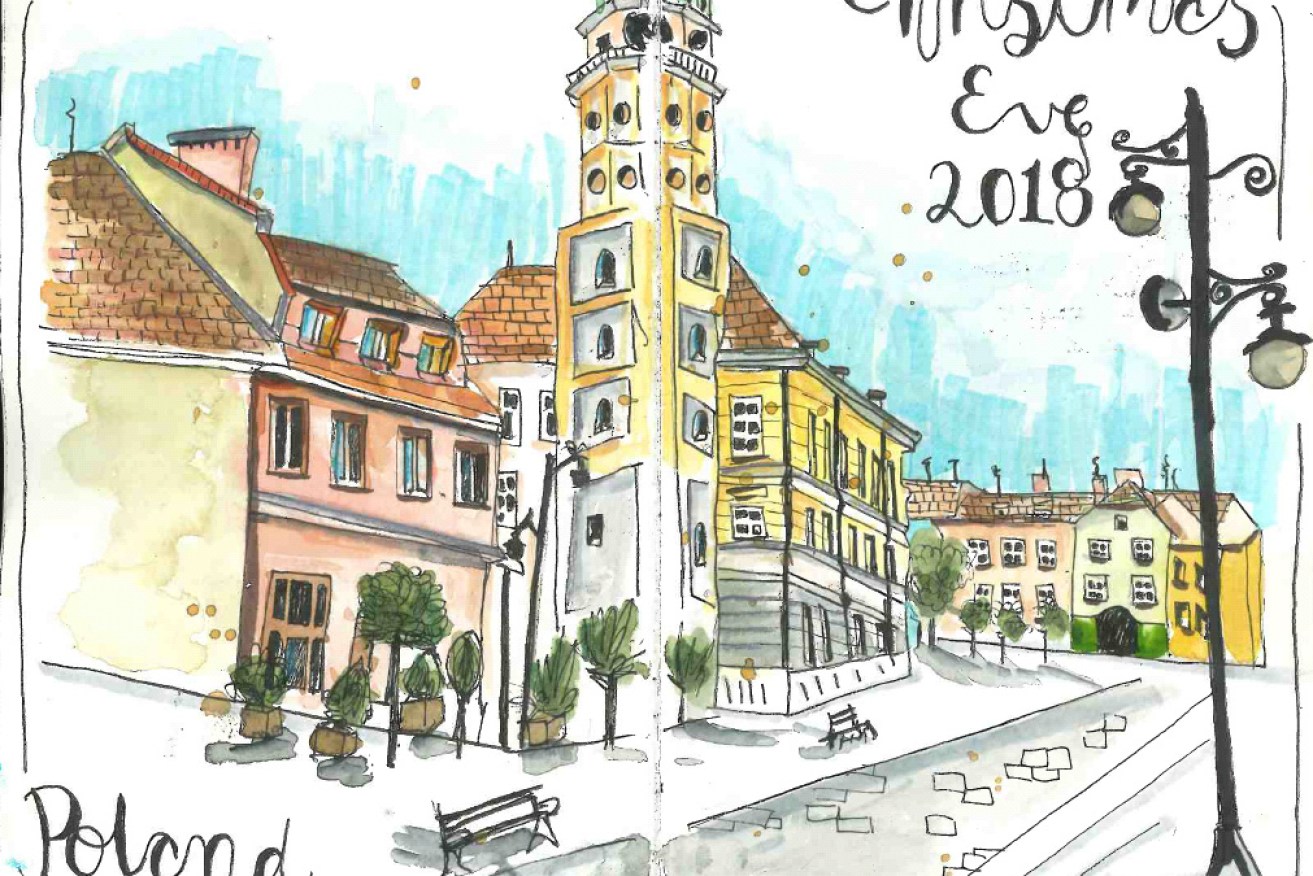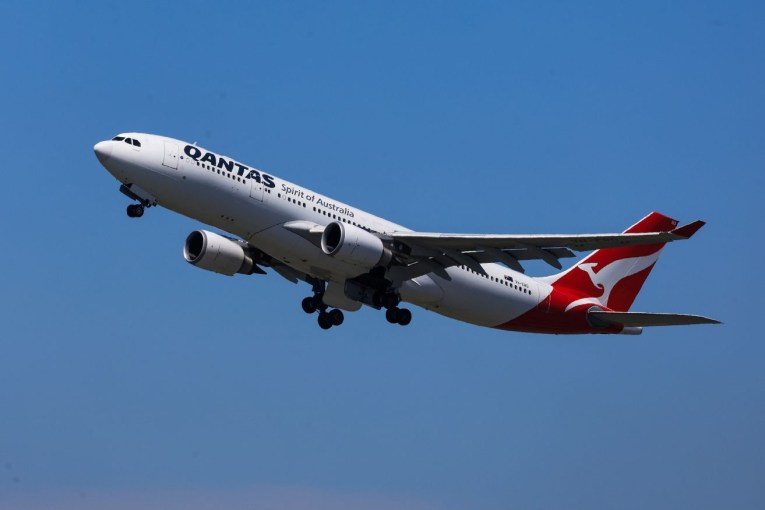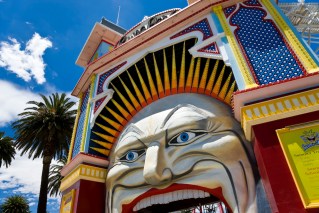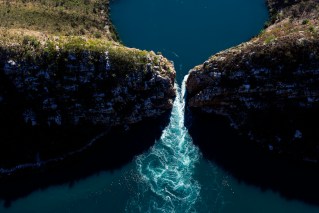The wonders of keeping a travel diary in the digital age


A sketch by the author of the Polish town of Olesnica. Photo: Caroline Zielinski
Drawing has always been a passion of mine. As a child, I would scribble anything – on anything – I could get my hands on.
This intractable need to document has recently extended to travel sketching.
I first became interested in urban sketching four years ago, while trying to teach myself how to paint with watercolours.
Today, armed with the skills to sketch on the go, I carry my small tub of paints whenever I travel, most recently filling my notebook with scenes from a rural Polish town called Olesnica, where my parents recently moved.
During my fortnight in this tiny town, 40 minutes from the main city of Wroclaw, I traversed centuries-old buildings, broken cobblestone roads and communist-era buildings, filling my notebook with pithy descriptions and images to remember my time here.
Sometimes, huddled against the wind and rain, I would sketch a quick outline of a building or two outside; other times, no longer able to take the freezing weather, I would “cheat” by taking a picture on my phone, sketching from it later.
Why go through all this, just for a sketch? It turns out that urban drawing not only has a rich artistic and political history, but is actually amazing for improving memory, chilling you out – and preserving, in detail, the special memories of a holiday.
Artists often document the places they travel to – and live in – through paintings and sketches, capturing either the glamour and wealth of big cities, or providing a snapshot of everyday reality, often mired in work and poverty.

Memories retained in watercolour.
But what of the everyday traveller, who either hasn’t considered painting their destination or perhaps believes they don’t have the ability to?
Back in the 1800s, before the rise of the tourism industry, British art critic and traveller John Ruskin observed that people seldom paid attention to the beautiful things they encountered, opting to buy cheap souvenirs rather than meaningfully engage with what they were seeing.
More than a century later, writer Susan Sontag wrote in her essay, On Photography, that photography developed “in tandem with one of the most characteristic of modern activities: tourism”.
“It [now] seems positively unnatural to travel for pleasure without taking a camera along. Photographs will offer indisputable evidence that the trip was made, that the program was carried out, that fun was had”.
Today, not only is photography an essential part of travelling; it is changing how we travel, and what we see.
The problem is, this is not a realistic representation of what we actually see, and, as science has found, will not make the trip any more memorable.
A 2013 study demonstrated just how little we recall of the objects and subjects we photograph using an instant camera. The experiment, in which volunteers were given digital cameras and told to take pictures of objects in a museum and to observe others without taking their photo, found that a day later, the participants were better able to recall the objects they hadn’t actually photographed.
Another study that looked at the effects on memory of drawing found the three-act technique of visualising something in your mind, putting pencil to paper to sketch it, drawing it, and then looking at the drawing is a powerful memory trick that outperforms other strategies (such as writing) when it comes to memory.
“Visual imagery alone has been shown to improve memory performance relative to rote repetition, researchers Dr Jeffrey Wammes, Melissa Meade and Myra Fernandes wrote.
“It is very possible that visual imagery is a contributor to, and potential explanatory mechanism for, any benefit documented as a result of drawing.”

Adventures in Indonesia, immortalised in watercolour.
Drawing has other benefits: not only is it evidence of a beautiful memory, but it can also be a type of “informal meditation”.
“Informal meditation can be achieved by doing something, such as drawing, eating, walking etc, and being totally present in that moment so that you are able to have a full-bodied experience of what you’re doing,” says Laura Kampel, a clinical psychologist and a PhD candidate at the Black Dog Institute.
Drawing can also help you experience “flow”, a phrase coined by psychologist Mihaly Csikszentmihalyi, for the mental state of being “fully in the zone”.
In his guide book for drawing on the go, urban sketcher Pete Scully writes that “sketching to record your world … sometimes takes a lot of practice”.
It can take years before you feel confident to sketch on the go, so there’s always the scrapbooking option. It combines sketches, diary entries, tips about restaurants and interesting memorabilia, such as foreign notes, postcards, stamps and tickets from museums, galleries.
Next time you’re planning to travel, consider getting a small, blank notebook with space for sketches and stickers (as well as diary entries).
You might not end up with a Picasso, but ultimately, sketching on the go isn’t about that: it’s about focusing on what’s there, in front of you, without a lens in between.









